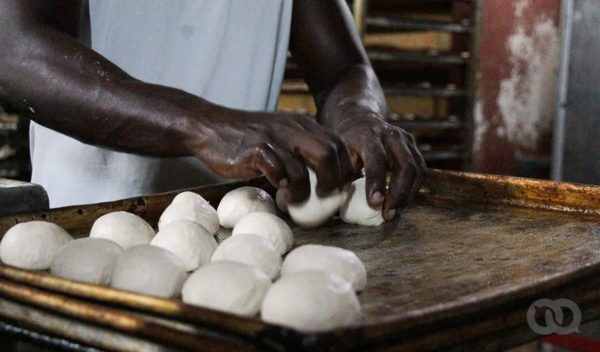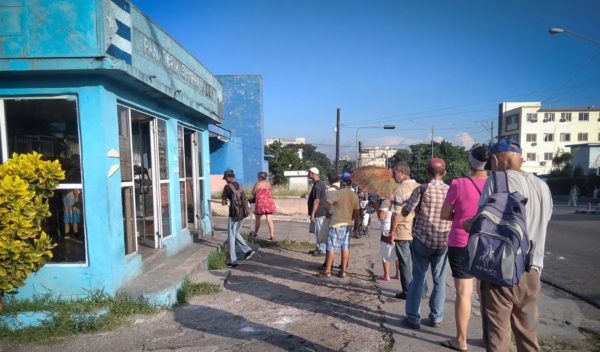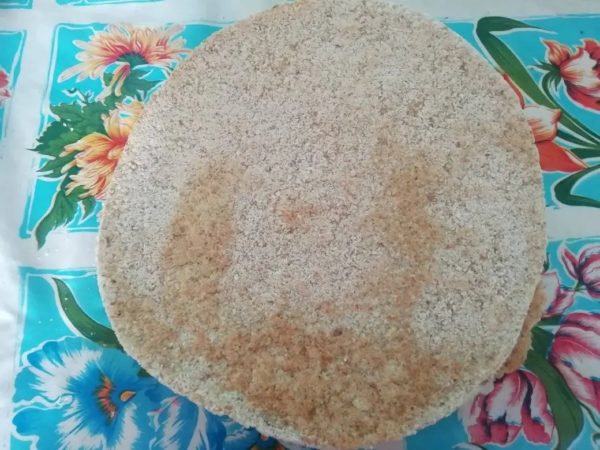How are Cubans Navigating the Flour and Bread Crisis?

By Glenda Boza Ibarra (El Toque)
HAVANA TIMES – Three bread rolls cut in half make six, and three pieces go in each lunch box. That’s how Marianela guarantees her two daughters’ daily snack at primary school. They then split them however they want at school. Marianela also lives with her mother. The fourth bead roll they get with the ration booklet is cut in half and makes the girls’ breakfast.
“You could get by before with bread sold freely and the ration store’s, but now you have to depend on just the daily bread roll from the ration store.”
Marianela says that sometimes she gets given a bread roll here or there, or she keeps the one she gets at work. Cutting off the crust, she and her mother are able to taste a little. They cut it up into pieces on the weekend and toast it.
Other mothers and fathers are juggling just like Marianela to ensure their kids’ snack, or for sick and elderly family members.
The most recent wheat flour crisis in Cuba has added another concern to the already poor diet Cubans have on the island today.
Bread saves you
A Cuban family with one or more children at home knows that bread is their savior. “It’s small and poor quality, but it means my daughter has breakfast,” Nersa says. “It’s been a while now that I don’t even know what it is to eat bread,” she says. “It’s just her and me on our own, and I leave her my roll for her snack.”
In the past, children’s snack at primary school almost always included bread: toasted, in a circle, sandwich, with oil and salt, but always bread. Lunchboxes today have croquettes, cakes, pork crackling and any other alternative parents find to feed their children.
Some decide to make bread on their own. Others prefer to buy it in large quantities and freeze it. “Yep, you can freeze bread and then you toast it, and it’s fine for eating,” a mother says as she lines up at one of the Cubana del Pan bakeries in Cienfuegos. People take their place in line there from the early morning, without knowing if they’ll be able to get anything. “I don’t care what they sell: garlic bread, pan de gloria (sweet bread) or breadsticks,” she says.
“If there wasn’t a lot on offer before, just imagine now,” a man over 60 agrees, almost 300 kms away at a bakery on 31st and 42nd Streets in Havana’s Playa municipality.
According to him, a bag of ten small bread rolls went from costing 80 pesos one day, to 150 pesos the next. “My wife has high blood pressure and doesn’t eat a lot of bread, but sometimes you can put oil and salt on it and it can be breakfast and even lunch,” he laments.
Sitting on a bench without a back in a nearby park, waiting for the bakery to start selling, he remembers the days he used to buy “chorizo or croquettes” at the kiosk next to the bakery and “he’d have breakfast like a king.”
“They used to cost 10 cents CUC (USD), but we’d put it on special bread (with a thick crust) and we’d improve our weekends,” he remembers. “It’s been ten years since then. First, the chorizo disappeared, then the croquettes, and now there isn’t bread either.”
Bread rolls
A concerned mother wrote to the Municipal Education Board in La Lisa, which was published in the 8/22 newsletter, and confirmed that there wasn’t enough bread even for daycare centers.
The document has been shared on social media. It explains that due to bread shortages, these educational institutions needed to ensure two daily snacks with juice, fruit, yogurt, custard, cheese and other foods.
The suggested menu left quite a few people with doubts as these foods are also hard to find. However, the most worrying thing for parents was that they weren’t allowed to send snacks in with their children.
“How can you stop us parents from ensuring the basics for our children (I’m just talking about ration store bread), so they aren’t so hungry and try and help the situation? How are you going to stop us from helping when the State can’t provide? Whatever your reasons, you can’t stop us,” the mother scolded.
At the end of the day, we still don’t know what the response was to her complaint, but it received over 400 comments in its favor and in solidarity and was shared five hundred times.
Days before, Havana’s Provincial Trade Company published that there were problems with flour supplies. A note from the Ministry of Interior Commerce (MINCIN) announced that “the country has sought alternatives to ensure bread production via the family rations.”
Information in the three paragraphs published by MINCIN mentioned the following as the main causes for wheat flour shortages in Cuba: “a stepped up blockade, the international logistical crisis and the country’s financial limitations.”
Julio Martinez Roque, the Government Coordinator in the capital, explained that this situation was due to “delays in wheat and flour shipments, as well as the high price of maritime services today.”
While statistics for this year are still not available, according to Cuba’s Office of Statistics and Information, Cuba imported approximately 614,000 tons of wheat, semolina, wheat flour and morcajo or unground meslin, in 2021. This figure is the lowest it’s been in the past 17 years.
Martinez Roque said that the decision had been made to “reduce wheat flour consumption in the capital” and that bread for social consumption in a group of entities – Gastronomy and Education – couldn’t be secured. Bodega (ration) stores, the prison population, children without parental care, elderly residences, psychiatric hospitals and the Cubana del Pan bakery network “and some for the Public Health system” would have bread.
Some rumors claimed that rationed bread roll distribution had been “compromised”. However, people’s main concern was about “non-rationed bread” and other wheat-based products. The ones that are “salvation” snacks for children, the elderly and sick.

Private sellers are allowed to sell it, but…
Rumors, imprecise information, official statements and “explanations to the population” about Cuba’s bread situation have been the talk of the town in late August and early September. People’s main concern was that the sale of any product made with wheat would be banned. Lots of media platforms said this was a false rumor.
Nevertheless, they explained that “anyone with their papers in order can carry on producing, as there are ways to import flour.”
After the announcement, lots of people stopped selling products made with wheat flour. Some businesses had to close down temporarily, others just took them off the menu.
Opinions about bread sold by private business owners are split mainly between: those who criticise the fact that the flour they are using has been taken from state establishments and others who are thankful for private production so they can have access to a wide range of quality products.
Marcos is a young seller at a kiosk in Las Tunas. Ever since he got his self-employment license as a food producer, he’s wondered how these licenses are approved without offering them a stable wholesale market of raw materials and supplies.
“I used to buy a bag of flour on the illicit market for 6-10,000 pesos. The five-pound jug of flour costs 150 pesos or 200 pesos,” Marcos admits.
He says that he once bought a 25 kg bag for 70 MLC (the magnetic dollars) in Havana and has even tried to buy it online, but none of them were profitable for him.
“People don’t want us to mark up our prices, but if I have to buy flour in MLC and sell my products in pesos, I have to work magic because if I don’t, the math doesn’t add up,” he concludes.
What else if there’s no bread?
In Las Tunas, cassava bread, 20 cm in diameter, costs 20 pesos. It’s always been consumed in the province and becomes more popular on two occasions in the year: in December, to accompany roasted pork and cassava with garlic sauce, and when there are regular wheat flour shortages.
Cassava bread, also known as “the indigenous people’s bread”, is made with cassava which the indigenous people used to cook. It is almost identical today, using the same techniques and instruments in its production.
Many centuries later, it’s still a source of nutrition – and salvation – for many families when there isn’t any bread to be found. With a bit of salted water; with cheese, sausages or any cold meat, as if it were a pizza; or toasted in a little bit of oil are just some of the ways eastern Cuban families eat cassava bread.

“It saved my son in the holidays,” a father says in relief. “It was his breakfast and I could keep the bread roll for his snack. I also used to get by with crackers, but they are even harder now to find.”
In Las Tunas, a pack of crackers sold by “private sellers” shot up from 35-40 pesos to 160-200 in a week. In Sancti Spiritus, it went up from 80 to 100 or 120 pesos. In Cienfuegos, from 30 pesos to over 50 and 90 pesos. Bags of bread can be found for over 100 pesos and baguettes or “special bread” went up from 3, 4, 7 and 10 pesos to 50 or over 100 pesos depending on the place.
In Caraballo, a town in Ranchuelo known for its salted crackers, you can barely find them. People used to get off the National Highway here and stop to buy them. You could find bags of crackers for 25 and 30 pesos at different points across the town. In the past. Now, packets cost between 130-150 pesos… when they appear.
Yunia Morales found them on Revolico and buys them for her son’s snack. I stick five or six in his bag and send him off to school. Sometimes, he tells me he’s still hungry and it breaks my heart.”
Yunia lives near Santa Clara Boulevard where one of Cubana del Pan’s bakeries is located, which has a much more stable supply in times of wheat flour crises.
“It’s like a cycle,” she says. “Ever since my son was born in 2013, I don’t know how many times we’ve had to worry about uncertain bread supplies. Luckily, we live centrally and can easily reach products when they are put out for sale.”
Special Production Business Units – retail points and pastry shops – are basically paralyzed these days in Santa Clara.
The Cuban Bread Company has had to adopt some alternatives such as using “baking yeast that is 30% made of root vegetables and fruit pulp,” which Nieves Lebeque Rabeiro, the deputy director of the company told the press. However, the poor quality of rationed bread has also made many people suspect that these expanders are being used to make this bread too.
Some children don’t take any snacks to school during the current shortage and beginning of the school year, and schools don’t always guarantee anything.
“My ten-year-old daughter tells me that at recess, if there’s nothing in the dining hall, the teacher asks the children to share their snack with those who haven’t brought anything,” Marianela says. “It’s a beautiful gesture amidst so much suffering because of these shortages, but I hope no parent and child has to ever go through this.”






A few years back, my wife and I worked hard to convince her grandfather in Guantanamo to try to eat LESS bread for his health reasons. Even then, food choices were limited in Cuba but we never imagined that bread would be scarce. Just when you think that it can’t get worse in Cuba…
That is so funny, I will inbox you 🙂